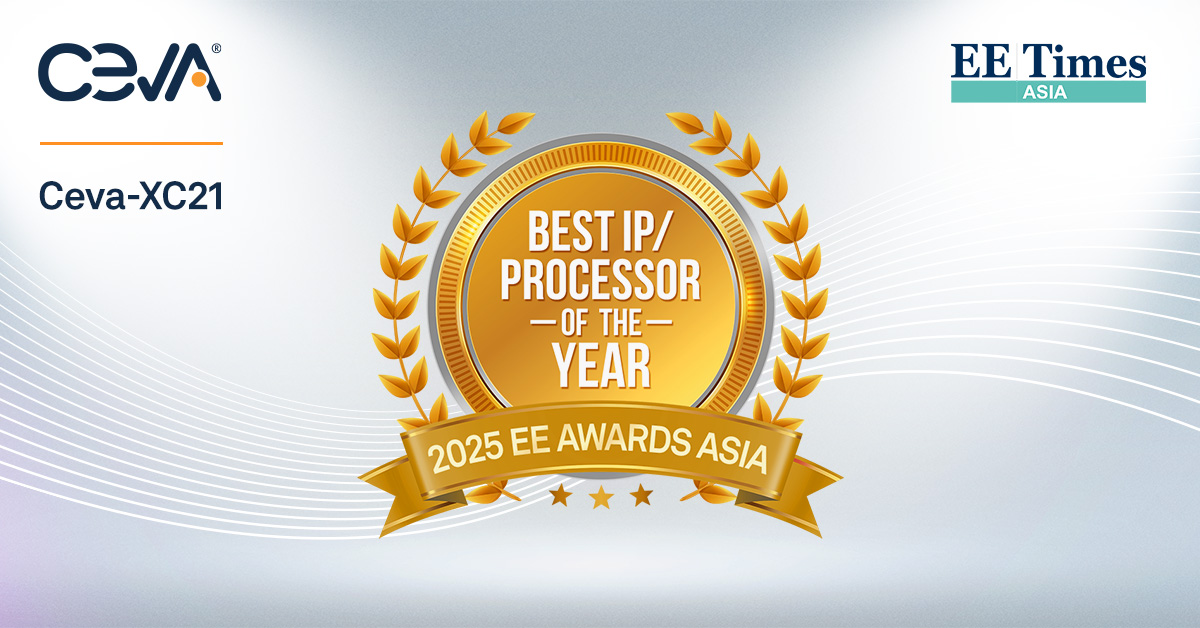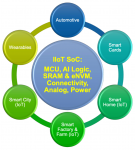Technological leadership has long been key to TSMC’s success and they are following up their leadership development of 5nm with the world’s smallest SRAM cell at 0.021um 2 with circuit design details of their write assist techniques necessary to achieve the full potential of this revolutionary technology. In addition to their… Read More
 The Quantum Threat: Why Industrial Control Systems Must Be Ready and How PQShield Is Leading the DefenseIndustrial control systems (ICS) underpin the world’s most…Read More
The Quantum Threat: Why Industrial Control Systems Must Be Ready and How PQShield Is Leading the DefenseIndustrial control systems (ICS) underpin the world’s most…Read More Radio Frequency Integrated Circuits (RFICs) Generated by AI Based Design AutomationBy Jason Liu, RFIC-GPT Inc. Radio frequency integrated…Read More
Radio Frequency Integrated Circuits (RFICs) Generated by AI Based Design AutomationBy Jason Liu, RFIC-GPT Inc. Radio frequency integrated…Read More Ceva-XC21 Crowned "Best IP/Processor of the Year"In a resounding affirmation of innovation in semiconductor…Read More
Ceva-XC21 Crowned "Best IP/Processor of the Year"In a resounding affirmation of innovation in semiconductor…Read MoreThe Story of Ultra-WideBand – Part 2: The Second Fall
Over-engineered to perfection, outmaneuvered by Wi-Fi
In Part 1 of this series, we recounted the birth of wideband radio at the turn of the 20th century, and how superheterodyne radio killed wideband radios for messaging after 1920. But RADAR kept wideband research alive through World War 2 and the Cold War. Indeed, the story of… Read More
COVID-19 Collateral Chip Collision – Will Fabs & Foundries Flounder?
Corona Fab Impact –
lower production/raise prices
Chip production supply chain may break
It could temporarily fix memory oversupply
Could it risk the fall roll out of next Iphone
The ” Two week tango” – Waiting games at fabs
When a highly specialized piece of semiconductor equipment misbehaves to the… Read More
Designing Next Generation Memory Interfaces: Modeling, Analysis, and Tips
At DesignCon 2020, there was a presentation by Micron, Socionext and Cadence that discussed design challenges and strategies for using the new low-power DDR specification (LPDDR5). As is the case with many presentations at DesignCon, ecosystem collaboration was emphasized. Justin Butterfield (senior engineer at Micron)… Read More
LithoVision – Economics in the 3D Era
Each year on the Sunday before the SPIE Advanced Lithography Conference, Nikon holds their LithoVision event. This year I had the privilege of being invited to speak for the third consecutive year, unfortunately, the event had to be canceled due to concerns over the COVID-19 virus but by the time the event was canceled I had already… Read More
The Story of Ultra-WideBand – Part 1: The Genesis
In the middle of the night of April 14, 1912, the R.M.S. Titanic sent a distress message. It had just hit an iceberg and was sinking. Even though broadcasting an emergency wireless signal is common today, this was cutting edge technology at the turn of the 20th century. This was made possible by the invention of a broadband radio developed… Read More
Trends in AI and Safety for Cars
The potential for AI in cars, whether for driver assistance or full autonomy, has been trumpeted everywhere and continues to grow. Within the car we have vision, radar and ultrasonic sensors to detect obstacles in front, behind and to the side of the car. Outside the car, V2x promises to share real-time information between vehicles… Read More
Reliability Challenges in Advanced Packages and Boards
Today’s Market Requirements
Complex electronic devices and (sub)systems work for us in important applications, such as aircrafts, trains, trucks, passenger vehicles as well as building infrastructure, manufacturing equipment, medical systems and more. Very high reliability (the ability of a product to meet all requirements… Read More
GLOBALFOUNDRIES Sets a New Bar for Advanced Non-Volatile Memory Technology
Whether it’s the solid-state disk in your laptop, IoT/automotive hardware or edge-based AI, embedded non-volatile memory (eNVM) is a critical building block for these and many other applications. The workhorse technology for this capability has typically been NOR flash (eFlash), but a problem looms as eFlash presents challenges… Read More
Coronavirus Chops SPIE Litho EUV Conference
Corona Curtails already quiet SPIE Litho conference
Our best guess is that attendance was off by 30% from last years SPIE conference due to a lack of travelers from many Asian areas obviously out of Corona fear. Even Intel, which is a few miles away was a virtual no-show with a mass cancellation.
More importantly, virtually all after… Read More













The Quantum Threat: Why Industrial Control Systems Must Be Ready and How PQShield Is Leading the Defense